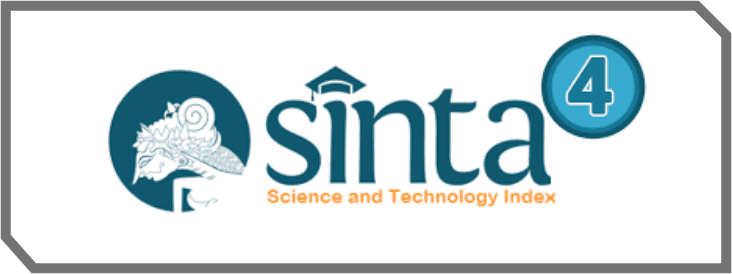Pengaruh Elemen Visual terhadap Respon dan Keterlibatan Emosional dalam Desain Poster Kampanye Sosial
DOI:
https://doi.org/10.55606/jurrsendem.v4i2.6291Keywords:
audience, campaign, design, poster, visualAbstract
Social campaign posters are one of the visual communication media that has an important role in conveying public messages, shaping perceptions, and encouraging changes in social behavior in society. With visual power, posters can express messages directly, effectively, and emotionally to the audience. This study aims to examine how key visual elements—color, typography, imagery, and layout—affect the emotional response and audience engagement to social campaign messages. A qualitative approach was used by collecting data through visual observation of a number of selected social campaign posters, design analysis, and literature review from relevant literature. The results of the analysis show that each visual element has a significant contribution to the power of the message. Colors, for example, are able to evoke emotional resonance by influencing the mood of the audience, such as the color red that conveys urgency or the color green that represents expectations and the environment. Imagery or illustrations provide the power of imagination and help the audience connect the message with social reality. Proper typography improves readability, emphasizes the main message, and establishes the desired tone of communication. Meanwhile, a well-planned layout creates a visual flow that makes it easier for the audience to understand the message in order. The harmonious interplay between colors, typography, imagery, and layout has been proven to strengthen visual appeal, evoke empathy, and motivate audiences to participate in social campaigns.
Downloads
References
Barthes, R., & Heath, S. (1988). Image, music, text (Noonday Press ed.). Hill and Wang.
Benoit, I. D., Miller, E. G., Kordrostami, E., & Ekebas-Turedi, C. (2021). Improving the effectiveness of anti-texting and driving PSAs: The effect of ad elements on attitude change. Journal of Social Marketing, 11(2), 167–186. https://doi.org/10.1108/JSOCM-06-2020-0103
Billard, T. J. (2016). Fonts of potential: Areas for typographic research in political communication (SSRN Scholarly Paper No. 3262979). Social Science Research Network. https://papers.ssrn.com/abstract=3262979
Brumberger, E. (2003). The rhetoric of typography: The awareness and impact of typeface appropriateness. Technical Communication. https://www.academia.edu/38391596
Dallyono, R., & Sukyadi, D. (2019). An analysis of multimodal resources in environmental protection posters. Indonesian Journal of Applied Linguistics, 9(2), Article 2. https://doi.org/10.17509/ijal.v9i2.20245
Dick, M. E. K., & Woloszyn, M. (2023). Influence of typographic properties on user experience in digital interfaces. Estudos em Design, 31(2), Article 2. https://doi.org/10.35522/eed.v31i2.1711
Elliot, A. J., & Maier, M. A. (2014). Color psychology: Effects of perceiving color on psychological functioning in humans. Annual Review of Psychology, 65, 95–120. https://doi.org/10.1146/annurev-psych-010213-115035
Fauziyyah, A., Marlina, N., & Ruslan, R. (2024). Scrutinising the contribution of textual and visual resources in campaign posters: An SF-MDA. Journal of Education, Language Innovation, and Applied Linguistics, 3(2), Article 2. https://doi.org/10.37058/jelita.v3i2.10940
Foss, S. K. (2004). Theory of visual rhetoric. In K. Smith, S. Moriarty, G. Barbatsis, & K. Kenney (Eds.), Handbook of visual communication (pp. 141–152). Routledge.
Fredricks, J. A., Blumenfeld, P. C., & Paris, A. H. (2004). School engagement: Potential of the concept, state of the evidence. Review of Educational Research, 74(1), 59–109. https://doi.org/10.3102/00346543074001059
Kim, H. J., & Jang, J. M. (2018). The easier the better: How processing fluency influences self-efficacy and behavioral intention in pro-social campaign advertising. Sustainability, 10(12), Article 12. https://doi.org/10.3390/su10124777
Kuniecki, M., Pilarczyk, J., & Wichary, S. (2015). The color red attracts attention in an emotional context: An ERP study. Frontiers in Human Neuroscience, 9. https://doi.org/10.3389/fnhum.2015.00212
Lang, A., Dhillon, K., & Dong, Q. (1995). The effects of emotional arousal and valence on television viewers’ cognitive capacity and memory. Journal of Broadcasting & Electronic Media, 39(3), 313–327. https://doi.org/10.1080/08838159509364309
Luo, S. (2022). Examining the association between color and mood. In Proceedings of the 5th International Conference on Arts, Design and Contemporary Education (pp. 253–259). https://doi.org/10.2991/assehr.k.220131.046
Manohar, S., Kumar, R., Saha, R., & Mittal, A. (2022). Examining the effect of emotional branding in building brand equity of social marketing campaigns: A case on Swachh Bharat, India. Society and Business Review, 18(2), 197–218. https://doi.org/10.1108/SBR-09-2021-0159
Nersveen, J., Kvitle, A. K., & Johansen, E. A. (2018). Legibility in print text for people with impaired vision. In Transforming our world through design, diversity and education (pp. 862–869). IOS Press. https://doi.org/10.3233/978-1-61499-923-2-862
O’Hara, B. J., Owen, K. B., Bauman, A. E., Dunlop, S., Phongsavan, P., Furestad, E., Scott, N., & Freeman, B. (2023). Hope and sadness: Balancing emotions in tobacco control mass media campaigns aimed at smokers. Health Promotion Journal of Australia, 34(4), 856–866. https://doi.org/10.1002/hpja.683
Petty, R. E., & Cacioppo, J. T. (1986). The elaboration likelihood model of persuasion. In R. E. Petty & J. T. Cacioppo (Eds.), Communication and persuasion: Central and peripheral routes to attitude change (pp. 1–24). Springer. https://doi.org/10.1007/978-1-4612-4964-1_1
Pochun, T., Brennan, L., & Parker, L. (2018). Advertising effects? An elemental experiment. Australasian Marketing Journal, 26(4), 338–349. https://doi.org/10.1016/j.ausmj.2018.09.002
Sari Utami, A., Adib, A., & Widodo, S. (2019). Study of typography in Pijat Gaul banner in Surakarta. In Proceedings of the 1st Seminar and Workshop on Research Design for Education, Social Science, Arts, and Humanities, SEWORD FRESSH 2019 (pp. 1–8). https://doi.org/10.4108/eai.27-4-2019.2286807
Wen, L., Jingjing, W., Chen, W., & Luyu, S. (2022). Research on the visual imagery of posters based on the culture code theory of design. Frontiers in Psychology, 13. https://doi.org/10.3389/fpsyg.2022.861366
Downloads
Published
How to Cite
Issue
Section
License
Copyright (c) 2025 Jurnal Riset Rumpun Seni, Desain dan Media

This work is licensed under a Creative Commons Attribution-ShareAlike 4.0 International License.







